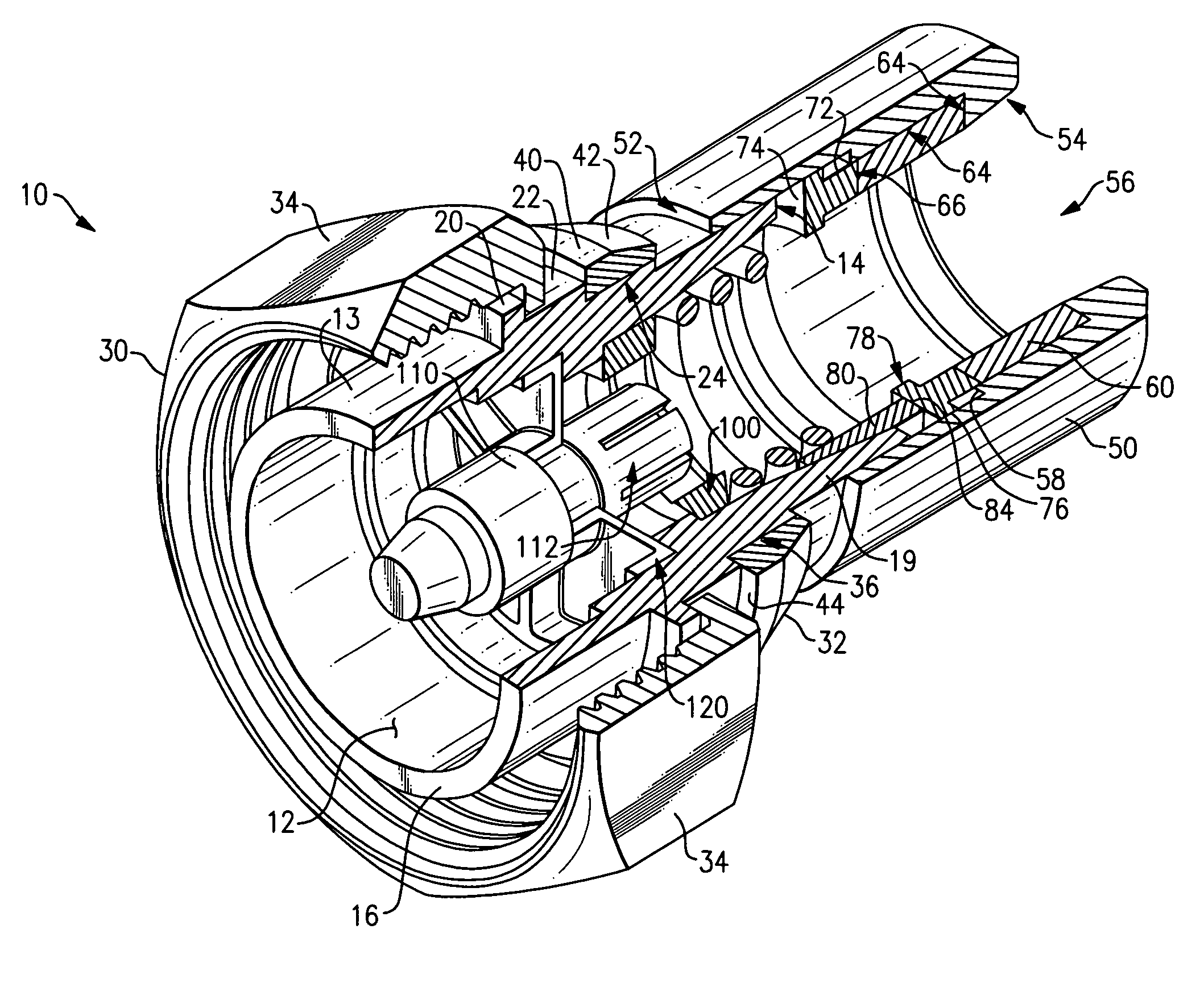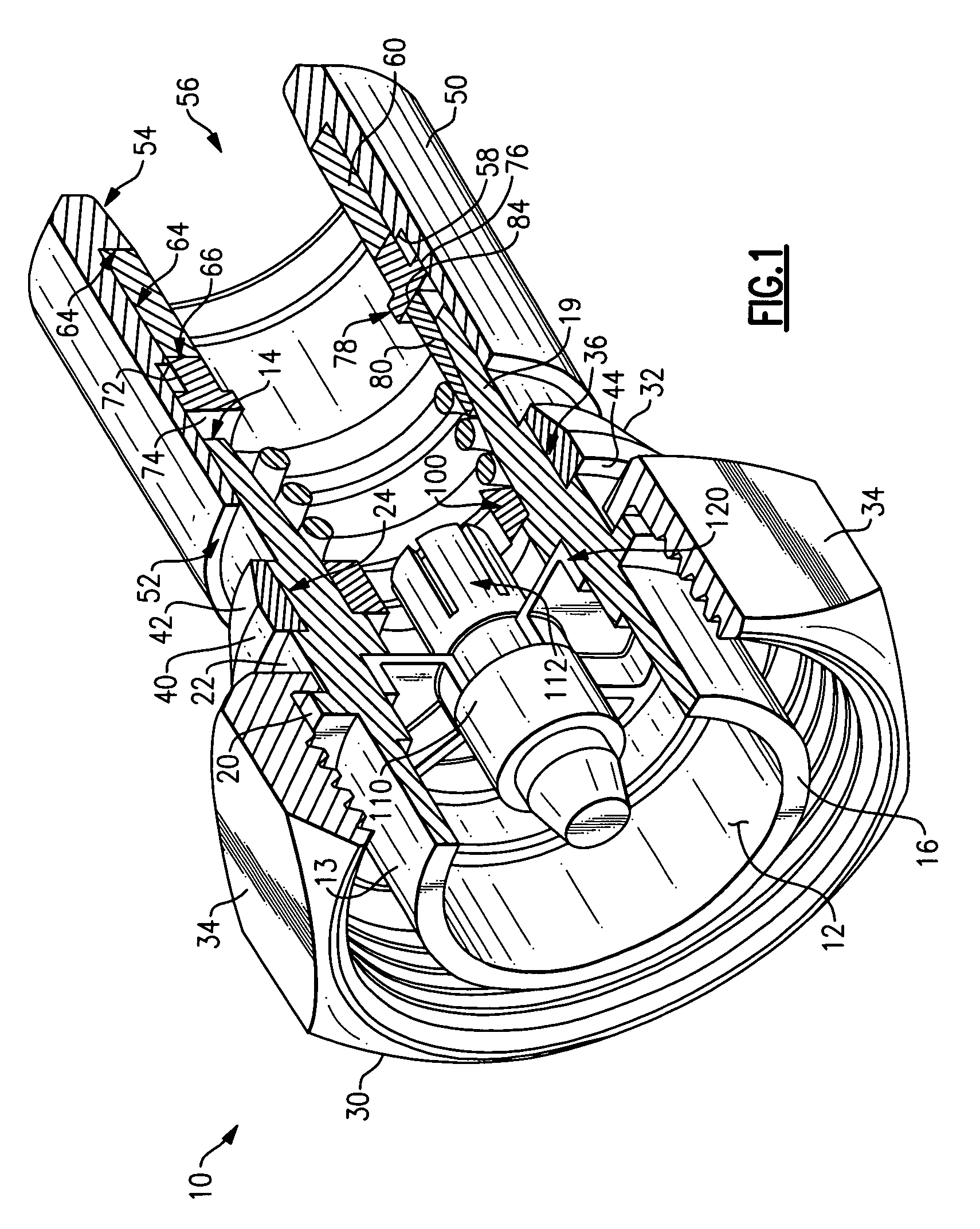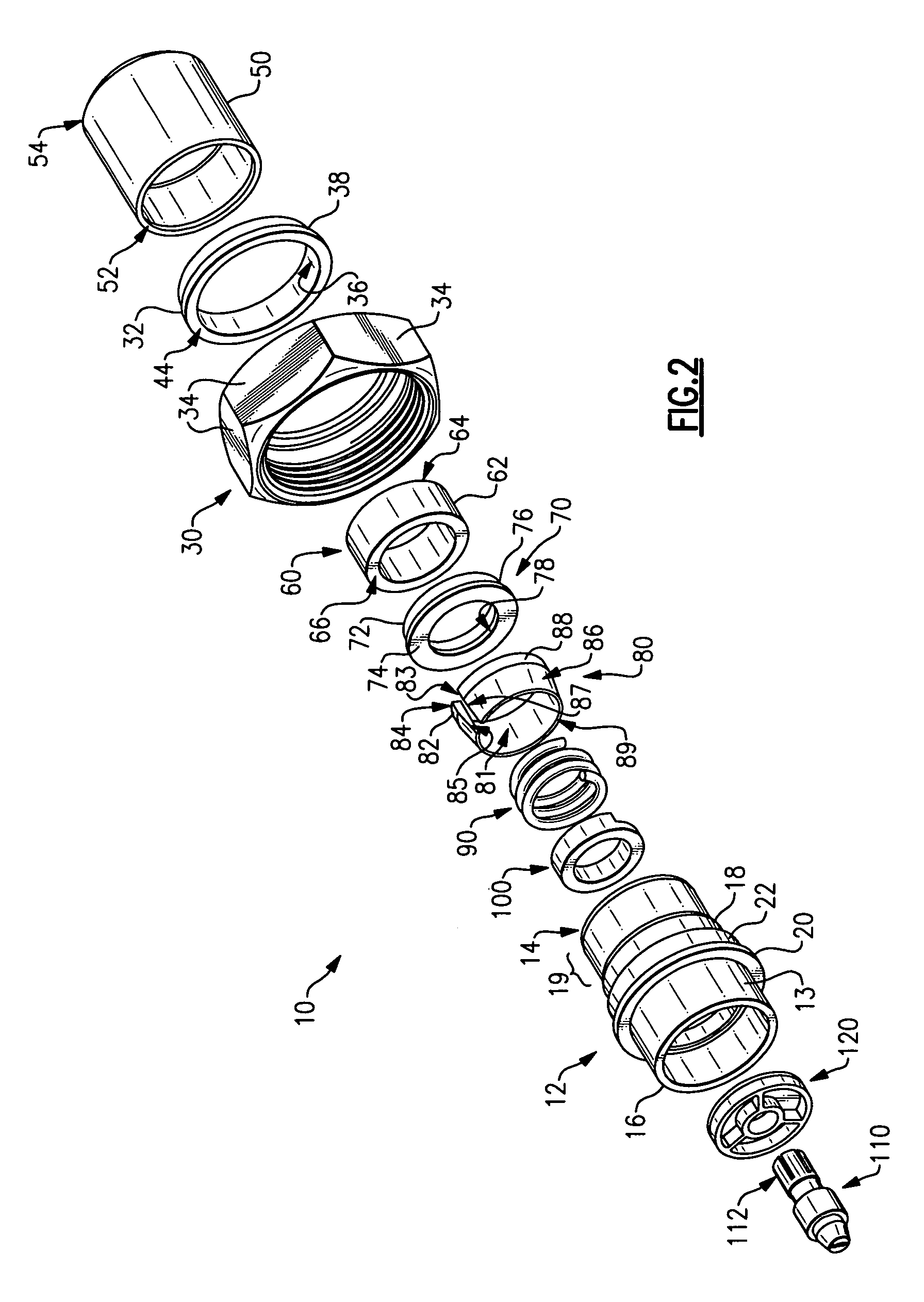Compact compression connector for spiral corrugated coaxial cable
a compression connector and coaxial cable technology, applied in the direction of coupling device connection, two-part coupling device, electrical apparatus, etc., can solve the problems of affecting signal quality, difficult for those in the art to design connectors or connection techniques, and difficult to correctly make such connections without requiring labor intensive effort of highly skilled technicians. , to achieve the effect of simple and effective utilization
- Summary
- Abstract
- Description
- Claims
- Application Information
AI Technical Summary
Benefits of technology
Problems solved by technology
Method used
Image
Examples
Embodiment Construction
[0024]Referring initially to FIGS. 1 and 2, a compression connector 10 for spiral corrugated coaxial cable is illustrated. The compression connector 10 is advantageous in that it is simple to install in a factory or field setting and it is reliably effective at establishing and maintaining contact forces between the connector and the cable. Although the connector 10 is depicted in these figures as a DIN male connector interface, it is within the scope of the present invention for the connector to have other interfaces, including, but not limited to a BNC connector interface, a TNC connector interface, an F-type connector interface, an RCA-type connector interface, a DIN female connector interface, an N male connector interface, an N female connector interface, an SMA male connector interface, and an SMA female connector interface.
[0025]The compression connector 10 includes a connector body 12, which has a proximal end 14 and a distal end 16. In accordance with an exemplary embodimen...
PUM
 Login to View More
Login to View More Abstract
Description
Claims
Application Information
 Login to View More
Login to View More - R&D
- Intellectual Property
- Life Sciences
- Materials
- Tech Scout
- Unparalleled Data Quality
- Higher Quality Content
- 60% Fewer Hallucinations
Browse by: Latest US Patents, China's latest patents, Technical Efficacy Thesaurus, Application Domain, Technology Topic, Popular Technical Reports.
© 2025 PatSnap. All rights reserved.Legal|Privacy policy|Modern Slavery Act Transparency Statement|Sitemap|About US| Contact US: help@patsnap.com



